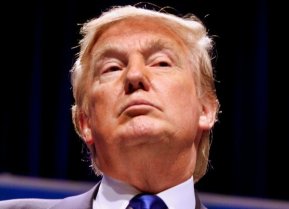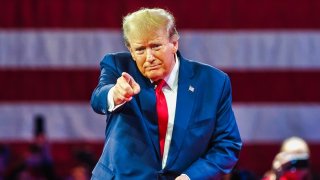Donald Trump’s Tariffs Would Be a Disaster for America
Imagine paying hundreds of dollars more each year for everyday items like groceries, clothing, and electronics. This is exactly what would happen if former President Trump’s proposed trade policies become a reality.
Imagine paying hundreds of dollars more each year for everyday items like groceries, clothing, and electronics. This is exactly what would happen if former President Trump’s proposed trade policies become a reality. His plan to impose a 10 percent tariff on all imports and a staggering 60 percent tariff on goods from China would hit everyone’s wallet hard. While it might sound like a strategy to protect American jobs, the truth is it’s the hardworking American consumer who would bear the brunt of these costs.
We are finally emerging from the high inflation caused by the pandemic, and the last thing we need is a policy that drives prices up further. A 10 percent tariff on all imports would make everyday items like clothing and toys up to ten percent more expensive. Domestic manufacturers, facing higher costs for imported parts and components, would also raise their prices.
Experts predict that these tariffs could cost American families an extra $1,500 to $1,700 annually. Lower-income individuals would be particularly hard hit, as they spend a greater percentage of their income on goods.
Imposing a blanket 10 percent tariff would likely provoke retaliation from other countries, including Japan, Germany, and the UK, who could impose similar tariffs on American exports. This could have a significant impact on American jobs, as exports account for over 11 percent of our economy, with almost 11 million American jobs depending on exports.
We’ve seen this before. In 2018 and 2019, when then-President Trump imposed tariffs on imports from China, China retaliated by imposing tariffs on U.S. exports, particularly agricultural products like soybeans and corn. To compensate American farmers for the loss of business, Trump provided $16 billion in subsidies. Unfortunately, these subsidies were an inadequate replacement for lost business, as trade competitors quickly capitalized on their newfound competitive advantage in the Chinese market.
Addressing China’s unfair trade practices is crucial. For fifteen years after joining the World Trade Organization, China manipulated its currency to benefit its exporters and make U.S. exports to China more expensive. China has systematically pressured U.S. companies investing in China to transfer their technology and has engaged in cyber theft of American technology. Additionally, a significant portion of the Chinese economy is state-owned, with the government giving preferential treatment to these companies.
The Chinese government has laid out a specific plan—Made in China 2025—to dominate future industries such as artificial intelligence, leading-edge semiconductors, and advanced aircraft. This plan relies on industrial policy rather than market forces, using tools such as regulations and subsidies to achieve its objectives. Loss of U.S. leadership in these industries would not only cost substantial jobs but also pose a serious threat to preserving our military edge.
Former President Trump’s 2018 and 2019 tariffs on thousands of products from China, valued at approximately $380 billion, aimed to counter Chinese practices. The proposed 60 percent tariffs on all imports from China would expand on this. However, tariffs are a blunt instrument. Even if blocked from the U.S. market, China’s favored industries would still benefit from economies of scale by selling in the Chinese market of 1.4 billion consumers and in world markets in Europe and Asia.
President Biden’s approach has been more effective. While largely keeping Trump’s tariffs in place, he has strengthened the U.S. response. To prevent China from gaining access to leading-edge technology, he imposed export controls on selling advanced technology to China. To counter Chinese subsidies, he signed the CHIPS and Science Act, providing tens of billions in subsidies for manufacturing semiconductors in the United States, and the Inflation Reduction Act, which provides substantial subsidies for manufacturing electric vehicles and batteries in the United States.
If elected, a President Harris would maintain Biden’s targeted approach to offsetting China’s predatory trade practices. However, we need to remember that competition must not turn into conflict. An all-out U.S.-China trade war would significantly worsen our relationship and could push China into dangerous counteractions.
In fact, mutually restoring most-favored-nation tariffs on non-critical items could be beneficial. Reducing tariffs on non-critical goods imported from China would help reduce inflation, and eliminating some of China’s retaliatory tariffs could boost U.S. exports, creating American jobs. Successful negotiations to reduce trade tensions would be a positive step toward easing overall tensions between our nations.
Voting for Trump in the upcoming election means endorsing a trade policy that could significantly raise the cost of living, jeopardize American jobs, and strain international relations. A targeted and strategic approach to dealing with China’s unfair trade practices, as seen under the Biden-Harris Administration, provides a more balanced and effective solution.
About the Author
William Krist is a former Assistant U.S. Trade Representative. He is the author of Globalization and America’s Trade Agreements.
Image: Shutterstock.com.


